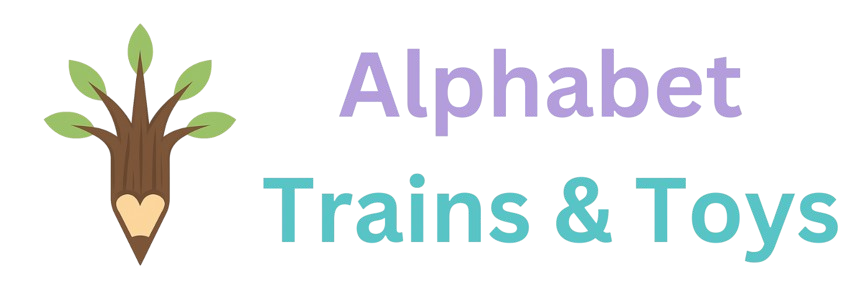Frequently Asked Questions about Montessori Toys
Montessori toys are inspired by the belief that if a toy focuses on teaching one specific skill at a time, it enhances children’s early development. This skill could be as simple as sorting items by color or shape, or stacking objects on top of each other. Researchers have found that the Montessori method, which includes using toys that teach life skills, is more effective than traditional education in developing both academic and life skills.1What Are Montessori Toys?
What Are the Features of Montessori Toys?
Interested in quality educational toys? Check out the best Montessori toys made for kids and toddlers.
References
- Randolph JJ, Bryson A, Menon L, Henderson DK, Kureethara Manuel A, Michaels S, Rosenstein DLW, McPherson W, O'Grady R, Lillard AS. Montessori education's impact on academic and nonacademic outcomes: A systematic review. Campbell Syst Rev. 2023 Aug 7;19(3):e1330. doi: 10.1002/cl2.1330. PMID: 37554998; PMCID: PMC10406168.
The purpose of Montessori toys is to foster independence, problem-solving, and cognitive development. These toys encourage self-directed learning, allowing children to explore and discover at their own pace. Unlike conventional toys, Montessori toys focus on simplicity, functionality, and meaningful play to help children build essential life skills. Interested in quality educational toys? Check out the best Montessori toys made for kids and toddlers.What Is the Point of Montessori Toys?
Why Montessori Toys Matter
The main difference between Montessori toys and regular toys is their design, purpose, and educational value. Montessori toys use natural materials and promote hands-on learning, while regular toys often include bright colors, electronics, and passive entertainment. Montessori toys focus on real-world skill development, while regular toys often prioritize entertainment. Choosing the right toys can impact a child's cognitive and motor skills development. Interested in quality educational toys? Check out the best Montessori toys made for kids and toddlers.What Is the Difference Between Montessori Toys and Regular Toys?
Key Differences
Montessori Toys Regular Toys Made from wood, fabric, and other natural materials Often made from plastic with synthetic components Encourage open-ended play and creativity May have fixed functions with limited creativity Designed for self-directed learning Often involve passive entertainment Minimalist design without flashy colors or sounds Frequently include lights, sounds, and screens
Montessori toys are designed to promote independence, problem-solving, and fine motor skills. They use natural materials and encourage open-ended play. Below are some of the best Montessori toy examples. Montessori toys focus on simple, functional designs that support child-led learning. They avoid unnecessary distractions like flashing lights and loud sounds, allowing children to engage fully in hands-on exploration. Interested in quality educational toys? Check out the best Montessori toys made for kids and toddlers.What Are Examples of Montessori Toys?
Popular Montessori Toys
A Montessori toy is designed to encourage independence, problem-solving, and hands-on learning. These toys focus on simplicity, functionality, and real-world skills. Here are the key characteristics to look for when identifying a Montessori toy. If a toy encourages exploration, problem-solving, and hands-on interaction without overwhelming stimuli, it is likely Montessori-friendly. Interested in quality educational toys? Check out the best Montessori toys made for kids and toddlers.How Can You Tell If a Toy Is Montessori?
Characteristics of Montessori Toys
Montessori toys are designed to promote independence, problem-solving, and sensory development. Unlike conventional toys, they encourage hands-on learning and skill-building. But are they worth the investment? Montessori toys may cost more than traditional plastic toys, but their educational value and durability make them a worthwhile investment. They support child-led learning and encourage meaningful playtime, leading to better long-term development. Interested in quality educational toys? Check out the best Montessori toys made for kids and toddlers.Are Montessori Toys Worth It?
Benefits of Montessori Toys
Are They Worth the Cost?
Open-ended play is unstructured, self-directed play where children use their creativity and problem-solving skills to explore different possibilities. Unlike structured play, open-ended activities do not have fixed rules or predetermined outcomes. Open-ended play encourages children to take control of their learning experiences, helping them develop independence and a love for exploration. Interested in quality educational toys? Check out the best Montessori toys made for kids and toddlers.What Is Open-Ended Play?
Benefits of Open-Ended Play
Examples of Open-Ended Play
Cleaning wooden toys requires gentle methods to preserve their natural finish and durability. Unlike plastic toys, wooden toys should not be soaked in water or cleaned with harsh chemicals. Follow these simple steps to keep them clean and safe. Regularly cleaning wooden toys helps maintain their quality and keeps them safe for children to play with. Interested in quality educational toys? Check out the best Montessori toys made for kids and toddlers.How to Clean Wooden Toys?
Steps to Clean Wooden Toys
Disinfecting wooden toys is essential for maintaining hygiene while preserving the natural wood finish. Unlike plastic toys, wooden toys require special care to prevent damage. Follow these safe and effective methods to disinfect wooden toys properly. Properly disinfecting wooden toys helps maintain their longevity and keeps them safe for children to use. Interested in quality educational toys? Check out the best Montessori toys made for kids and toddlers.How to Disinfect Wooden Toys?
Best Methods for Disinfecting Wooden Toys
Dos and Don'ts of Disinfecting Wooden Toys
✅ Do:
❌ Don't:
Sensory toys are designed to stimulate a child’s senses, including touch, sight, sound, and movement. They help children explore sensory input through hands-on play, which supports their cognitive and motor development. Sensory toys provide a fun and interactive way for children to develop crucial skills while exploring their environment. Interested in quality educational toys? Check out the best Sensory toys made for kids and toddlers.What Are Sensory Toys?
Types of Sensory Toys
Common Examples of Sensory Toys
Sensory toys play a vital role in early childhood development by stimulating the senses and encouraging exploration. They help children build motor skills, cognitive abilities, and emotional regulation through hands-on engagement. By incorporating sensory toys into playtime, children gain essential developmental benefits that support learning, creativity, and overall well-being. Interested in quality educational toys? Check out the best Sensory toys made for kids and toddlers.How Do Sensory Toys Help Children?
Benefits of Sensory Toys
Best Sensory Toys for Development
Montessori toys are made of wood because natural materials promote sensory exploration, durability, and environmental sustainability. Wooden toys provide a better learning experience by encouraging hands-on interaction without overwhelming distractions. By choosing wooden Montessori toys, parents support their child’s development with high-quality, natural materials that encourage creativity and focus. Interested in quality educational toys? Check out the best Montessori toys made for kids and toddlers.Why Are Montessori Toys Made of Wood?
Benefits of Wooden Montessori Toys
Sensory toys play a crucial role in child development by stimulating the senses and improving cognitive, emotional, and motor skills. They provide a hands-on learning experience that helps children explore the world around them. By incorporating sensory toys into playtime, parents can help children develop essential life skills in a fun and engaging way. Interested in quality educational toys? Check out the best sensory toys made for kids and toddlers.Why Are Sensory Toys Important?
Key Benefits of Sensory Toys
Choosing Montessori toys involves selecting simple, high-quality, and developmentally appropriate toys that encourage independent learning. Follow these key factors to find the best Montessori toys for your child. Choosing Montessori toys that match your child’s interests and abilities helps create a rich learning environment that supports their natural development. Check out our complete Guide to Age Appropriate Montessori Toys in our blo section. Interested in quality educational toys? Check out the best Montessori toys made for kids and toddlers.How to Choose Montessori Toys?
Key Factors to Consider
Best Montessori Toys by Age


